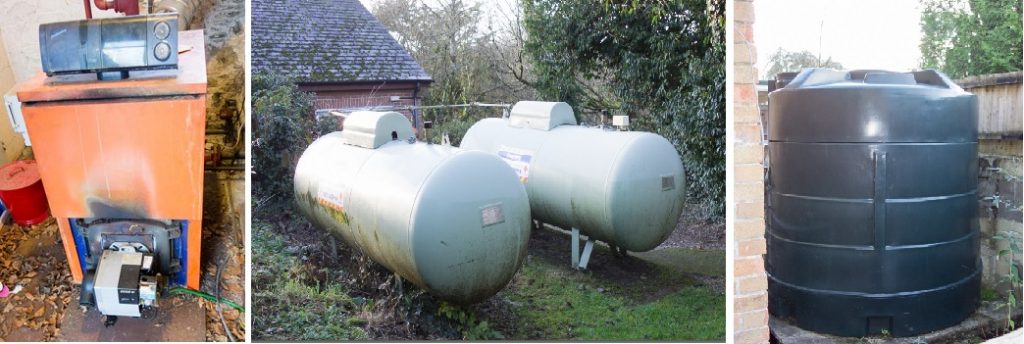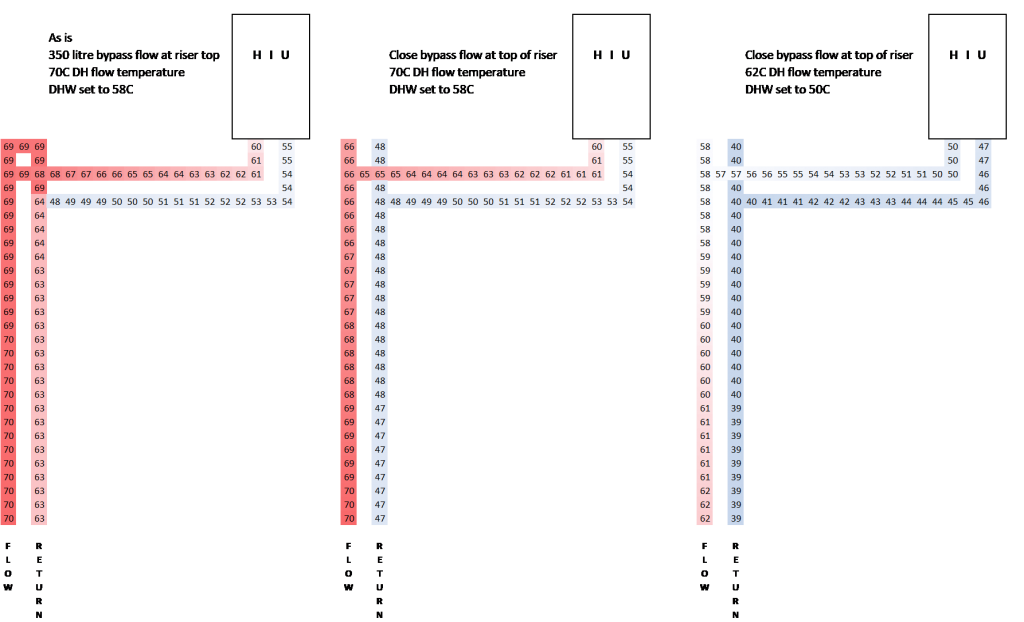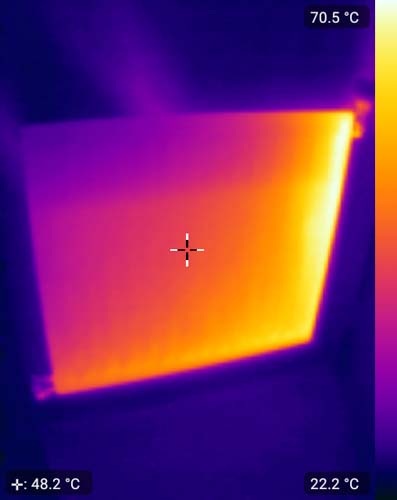2020- Heat network feasibility study Mount Kelly School, Devon

Working for Tamar Energy Community (TEC) assessing the technical and economic feasibility of installation of a heat network as this large independent school. Heat demand assessment for range of buildings and evaluation of river water and air source heat pumps. Advice to TEC on the development of a community owned ESCO to finance, own and operate the heat network. Project funded by Rural Community Energy Fund.

2020- Mines Heat White Paper for North East Local Economic Partnership
Working for CAG Consultants on the technical aspects of this paper assessing the potential and barriers to the development of the use of mines heat. Reviewing current economic and technical viability from a range of studies done (eg HNDU studies shared by relevant local authorities) and other UK and international sources.
2020- Heat network heat loss reduction study
Survey and report of practical low cost action the reduce heat losses and hence corridor overheating in DH heat block of flats. A range of possible actions found that would reduce the heat losses with little capital spend, reducing the issue of overly hot corridors and lowering the building operating costs. Use of AMR data and prior HIU knowledge / BESA HIU Test data to assess issues and magnitude of benefits arising from changes to HIU and system set up. Detailed the practical steps maintenance staff need to take to effect improvements.

2019- 2020 Retrofit ambient loop heat network feasibility study for housing in Rose Hill, Oxford

Undertaking technical and economic feasibility study for ambient loop heat network, The network will utilise waste heat from a local supermarket’s chillers and have a heat pump in each house. The key issues are achieving heat price lower than the current gas boilers and finding space within each house for the heat pump and is acceptable to resident. Assessment of lowest potential operating temperatures of the existing radiators in a sample of properties, to gauge scope to maximise heat pump CoP through weather compensation. Economic and practical issues comparison of ambient loop with conventional DH. Working with Bioregional who are undertaking community engagement. and heat pump installer who have experience in heat recovery from supermarkets and borehole heat storage. This work was extended through OxFutures funding to research the technical and economic design of the ambient loop heat network and the connection to heat pumps. This work significantly reduced the lifecycle costs and carbon emissions of the initially proposed ambient loop design.
2019- 2020 HIU and heating commissioning check list for developer, on site verification and fault rectification.
Development of commissioning procedure and check list for space heating and HIU for use in new build properties. Checklist requires recording of parameters from heat meter and thermometer such that performance can be confirmed. This work formed the basis of what is now in The Heat Networks Code of Practice – CIBSE CP1 (2020). This work also included advice to the contractor on how to solve the issues arising.
2019- Heat network modelling for BEIS / HNDU – cost, peak electrical load and carbon comparison of heat networks in comparison to individual domestic ASHP
Modelling in energyPRO a heat network with river source heat pump supplying 1000 existing houses and the same houses with individual ASHP. Assessing the operating costs, the peak electrical demand and carbon emission for the two alternatives. The heat network plant selection was based on STOD tariff and operated with such tariff which helped show the heat network had lower electrical costs and lower peak demands. The modelling used hourly air temperature data to assess the heat demand and ASHP CoP and daily river temperatures. The CO2 emissions were based on the half hour grid mix for the same year as the temperature data.

2019- Heat network development Oxford University Science area
Techno-economic study of options to link buildings and boiler houses such that the currently installed CHPs can be fully utilised. Development of a medium term plan such that the initial work aids the development of a larger heat network. Exploring renewable heat options eg heat pumps from river, heat rejected from cooling systems. Practical advice on how to lower the flow and return temperature of buildings such that DH heat losses lowered and economics of heat pumps improve. Assessing the economic and CO2 benefits of thermal storage. Assessment of options to lower current NOx emissions.
2018 – 2020 CIBSE – Heat Networks Code of Practice CP1 (2020)
Co author of the updated CIBSE / ADE Heat Networks Code of Practice document, compliance metrics and checklists. https://www.cibse.org/knowledge/knowledge-items/detail?id=a0q3Y00000IMrmGQAT
2016- 2018 DH fault finding and resolution of system performance issues

Working for a large developer on an 800 flat development where poor DH design/ specification / commissioning is preventing operation of the ground source heat pump that provides heating and cooling. Work involves assessing and prioritising issues preventing heat pump operation and identifying and implementing cost effective remedial measures- current focus on improving poor HIU performance. Work has involved unambiguous demonstration to contactor of performance failures and in depth analysis of the, technically flawed, contracted specification to justify the design and build contractor remedying the faults at their cost.
2017-onwards – BESA HIU Test Regime, Technical Lead
Continuing on from earlier work as lead author of the Test, the Technical lead for BESA checking all Tests and responding to technical issues arising. HIU Test Technical Committee Lead – the committee’s role is to further develop the Test to cover more HIU types and improve the usefulness of the Test.
2017- Heat network feasibility study for village of Swaffham Prior
Undertaking feasibility study for district heating in this small off gas gird village. Undertaking the technical and economic elements and collaborating with Bioregional on the potential business models.
2016- ongoing Technical advice to BEIS HNIP and HNDU teams
Working for BEIS undertaking technical assessment of applications for funding of DH projects under the pilot round of Heat Networks Investment Programme. Continuing work contributing to the technical standards, and technical optimisation of schemes for HNIP and technical reviewing of HNDU studies.
2016-2017 Long term zero carbon heat strategy for Bicester Ecotown

Working for A2 Dominion, the developer of 3500 houses at Bicester Ecotown, developing the heat elements of the Energy Strategy to deliver zero carbon heat to the district heated houses. Consideration of wide range of renewable (including heat from EfW plant and large scale solar thermal) and CHP heat sources to establish levels of CO2 reduction possible, capital and operating costs and practicality of each technology at this site.
2016 Options for heat network business models
Collaborating with Michael King of District Energy Developments, working with stakeholders across Harrow Council to identify common objectives, outline a range of potential district heating system business models taking account of risk and control and a recommended funding route as well as considering strategic procurement options
2014- 2015 Heat pumps for district heating – research and modelling
Working with Element Energy for DECC looking at scope for heat pumps on heat networks. Work includes survey of heat networks with heat pumps and development of model of heat pump performance in different heat networks. Model includes for the range potential heat sources and heat network configuration and loads.
https://www.gov.uk/government/publications/heat-pumps-in-district-heating
2015- Community owned DH study for Hinksey Oxford
Carbon Alternatives instigated a bid to the Urban Community Energy Fund to undertake a feasibly study for a small DH scheme based around an open air swimming pool, community centre, some council housing and a primary school. The proposal is to utilise solar thermal and a water source heat pump. This work is being done with the Low Carbon Hub in Oxford. Link to report :

2015- 2016 DECC funded research – Improving performance of existing heat networks through innovative use of Smart heat metering
Working with Guru Systems to automate the identification factors reducing DH efficiency and to economically appraise remedial measures. Use of data patterns from customer heat meters and energy centre heat meters to automatically characterise common faults and issues. Working on identifying issues reducing system efficiencies on 4 DH sites and assisting in methodology to identify these issues in the heat meter data. Carbon Alternatives is developing low cost remedial measures which are being implemented at 4 sites and helping assess the performance and cost impacts of the improvements.

HIU Testing – As part of the DECC funded work Carbon Alternatives has developed an HIU performance test standard as part for this work and is the technical lead on the testing of 6 market leading HIUs. This testing is highlighting the key importance of good HIU specification and commissioning to achieve efficient, low heat loss DH in operation. The testing includes the development and calculation of volume weighted return temperature, as an indicator of HIU performance based on real world HIU operating conditions. Test standard and the HIU results can be found at https://www.thebesa.com/ukhiu
2014- 2017 Ongoing work for SSE

Working for SSE at North West Bicester Ecotown and Greenwich Sq. I’m being given the opportunity by SSE to continue the projects I started whilst at SSE. Both these projects include condensing heat recovery from the CHP to increase heat output. At Greenwich this means the CHP delivers 13% more heat than the standard with no loss of electricity output or extra gas consumption.

The extra heat recovery come with the potential problem that the CHP will not run if the return temperature is above 55C. But actually there is a benefit here, as for the DH network to be efficient the return temperature should be way below 55C. 40-45C year round is common place in Denmark – have a look the DH at town of Skagen http://www.emd.dk/desire/skagen/. So this CHP limitation makes sure the DH and heat customers are commissioned correctly and deliver low return temperatures. With the loss of CHP revenue if return temperatures rise the problems get fixed and the CHP keeps running and generating financial and CO2 savings. It’s very common that DH / heat load commissioning is poor in the first place and this CHP restriction ensure good commissioning is a done – as the contractor’s not going to get paid if the CHP is not working it gets the ….
2015- 2016 Contributions to HNDU Studies for Oxford and Slough
I’ve worked for BRE on elements of their DH feasibility study for Oxford City Council / Oxford University. I am currently working with Greenfield Consulting for Slough Borough Council on the scope for more heat networks in Slough – focusing on heat from SSE Slough Heat and Power Plant.


